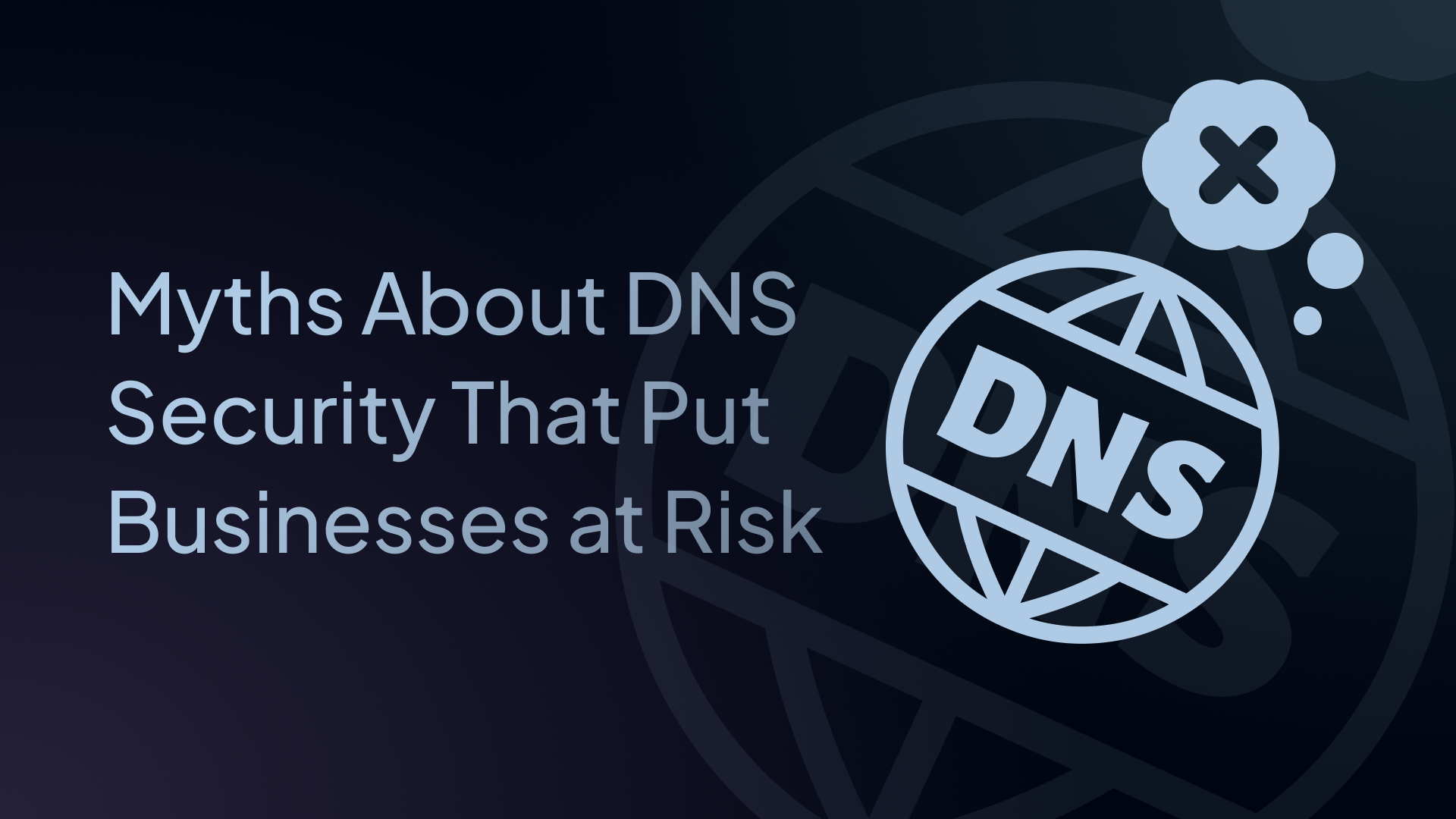5 Myths About DNS Security That Put Businesses at Risk
Let’s review some common misconceptions about DNS that can lead to security vulnerabilities.

The Domain Name System (DNS) is a background internet service that "just works." Many business owners are unfamiliar with this technology, and even network specialists can overlook DNS as a potential security risk.
But is DNS really secure enough to justify the trust people put into it? Let’s review some common misconceptions about DNS that can lead to security vulnerabilities.
Myth 1: "Our Firewall and Antivirus Handle DNS Security"
Standard IT security solutions, such as firewalls and endpoint protection platforms, are often considered sufficient to block all DNS-based threats. They are not.
Most firewalls do not deeply inspect DNS traffic by default. Some next-generation firewalls and security appliances can analyze DNS queries, but this is not the norm unless explicitly configured.
Here are some of the DNS-based threats that your firewall won’t block:
- Data Theft: Attackers can encode stolen data into DNS queries in a technique called DNS tunneling, sending it out to a malicious domain they control, bypassing firewall rules that allow outbound DNS.
- Botnet: Malware inside your network will use DNS to find the IP address of its command-and-control server.
- Domain Generation Algorithms: A type of malware that generates thousands of random domain names to find its command-and-control server. Manually blacklisting these is impossible.
Because these attacks exploit DNS itself, they can bypass traditional firewall protections and provide attackers with an alternative route into your system.
Myth 2: "DNS Is Just for Looking Up Websites – It Can't Be a Direct Threat"
DNS is a passive, informational protocol. You might think that it can't be used to directly attack a system or steal data. You would be wrong.
DNS can be weaponized both as a channel for attacks and as a direct amplifier for large-scale attacks.
- DNS Tunneling: Attackers can use DNS queries and responses to create a covert communication channel to exfiltrate data or even to provide a remote shell into a compromised machine.
- DNS Amplification Attacks: Attackers spoof a victim's IP address and send small queries to open DNS resolvers that respond with much larger replies. This is a DDoS attack strategy.
- DNS Hijacking: Manipulation of DNS queries by changing resolver settings or intercepting DNS traffic so that an attacker-controlled system answers queries.
- DNS Poisoning: Attackers inject forged DNS records into a resolver’s cache, causing users to be redirected to fraudulent websites that look identical to legitimate ones.
These events can lead to a variety of outcomes, including direct financial loss due to DDoS downtime, reputational damage resulting from involvement in a DDoS botnet, and costly data breaches.
Myth 3: "Our ISP's Default DNS Resolver Is Good Enough"
It is not unreasonable to expect that the DNS resolver provided by your Internet Service Provider (ISP) is secure. But this isn’t always the case.
Common issues ISP services face include:
- Lack of Security Filtering: Most ISP resolvers operate as pass-through services without integrated threat intelligence and filtering. While some do, they don’t match the security features of a specialized DNS security provider.
- Privacy and Data Mining: Your DNS queries are a log of every website every employee in your company tries to visit. ISPs may use this data to spy on activity, or in some cases, may aggregate and sell this browsing data.
- Hidden Censorship: Depending on your country, some ISPs blackhole even the most innocent of sites due to the presence of information not endorsed by their government, such as VPN sites.
That’s why many organizations are turning to DNS security solutions, which offer greater transparency, customizable filtering, and stronger protections than ISP defaults or free resolvers.
Myth 4: "DNSSEC Is Too Complex and Not Worth the Effort"
You might think that implementing DNS Security Extensions (DNSSEC) is technically challenging, can cause outages, and isn’t worth the hassle. That isn’t true.
While the implementation of DNSSEC requires careful planning, the value is immense:
- Authenticates DNS Responses: DNSSEC uses cryptographic signatures to prove that DNS data comes from the legitimate domain owner and hasn’t been altered.
- Builds Trust: By guaranteeing authenticity and integrity, DNSSEC reduces the risk of users being silently redirected to malicious sites.
Myth 5: "We Only Need to Secure External DNS"
Some believe that the internal DNS servers used for private networks are safe behind the firewall and don't need the same level of security as internet transactions. That is a mistake.
Internal DNS is a high-value target for attackers who have breached the perimeter. Access to it facilitates core hacker techniques:
- Lateral Movement: Internal DNS gives attackers a map of the network (hostnames, services, devices) and lets them move within it.
- Service Disruption: Attackers can manipulate internal records, disrupt core services, and reroute internal traffic.
- Active Directory Reliance: In Windows environments, DNS is tightly integrated with Active Directory, and a compromise in this area can disrupt authentication and facilitate privilege escalation.
Through DNS access and manipulation, an attacker can quickly escalate privileges and move across your entire network. As such, internal DNS needs to be secured and monitored just as much as external DNS.
Don’t Overlook Your DNS Service
DNS security is essential for the secure operations of your business. The security-hacker arms race is ever-present, and DNS has become a critical battleground in cybersecurity.
But you don’t have to be a passive victim. Armed with the knowledge of the above-busted myths, and by adopting smarter DNS tools like Control D that prioritize both security and control, you can boost your protection and reduce preventable threats without overhauling your existing infrastructure.

